#KiaSedona
Kia Officially Announces Sedona Replacement, Newish Name
As is often the case with global products, the Kia Sedona minivan doesn’t go by the same name in all regions. In its home market of South Korea, it answers to the Carnival moniker and is already on its fourth generation using Hyundai/Kia’s mid-size N3 platform.
Destined to enter the North American market as a 2022 model-year vehicle, the manufacturer used this week to promote its February 23rd debut via livestream. It also confirmed that it would no longer be using the Sedona name and would henceforth be known as the Carnival in the Western world.
2021 Kia Carnival/Sedona: Don't Call It a Minivan
The vehicle you see here may bear the name of a minivan, but Kia Motors affectionately (and perhaps optimistically) refers to it as a “Grand Utility Vehicle.”
Appearing in South Korea on Wednesday wearing next-generation duds, the Carnival —aka the North American-market Sedona — apparently wants to be mistaken for an SUV. The brand’s designers made sure the resemblance was more than fleeting.
Progressive Young Families Beware! Next-generation Kia Sedona Looms
What a year 2020’s turned out to be! Sure, there’s stuff happening in the background, but look at all the minivan news. Chrysler’s coming out with an all-wheel-drive Pacifica, Toyota’s turning the Sienna into a dedicated hybrid, and Kia — well, Kia’s not giving up.
As the least popular minivan in a shrinking segment, Kia’s Sedona will not fade from the U.S. market. Not when there’s a fourth-generation model about to debut in Kia’s South Korean home base.
Hyundai/Kia Issue Recalls Over Fuel Line Leak, Fire Risk
Hyundai is reportedly recalling around 207,000 Sonata models in the U.S. over a fuel hose issue that could create a fire hazard. Kia issued a recall on 142,000 Optima sedans and 51,000 Sedonas minivans for the same issue. While there doesn’t appear to be any injuries stemming from the problem, Hyundai Motor Group has notified the National Highway Traffic Safety Administration that the vehicles could incur a fuel leak that runs the risk of starting fires within the engine compartment.
The source of the issue has not been discovered; the NHTSA recall report stipulates that the manufacturer “believes the material used to produce the fuel feed line might be more susceptible to heat under certain vehicle operating conditions.” Be on the lookout for a less responsive motor, engine warning lights and the faint aroma of gasoline.
In a Slowing U.S. Auto Market, Minivan Sales Are Falling 7 Times Faster Than the Overall Market
The minivan as we know it is not dead. Credit for the minivan segment’s still-beating heart belongs in large part to the disappearance of most contenders – so few competitors remain that a handful of remaining minivan nameplates may well still sell in six figures in the United States in 2019.
Most automakers determined years ago that sticking their forks into this pie isn’t worth it; the pie was just too small. The absence of GM, Ford, Hyundai, and Volkswagen, along with the steady rise of the family-oriented crossover, caused the pie’s shrinkage to continue. Nissan and Mazda left, too, and the pie kept shrinking.
In fact, the rate at which the minivan pie is shrinking has picked up speed. Auto sales are slowing, to be fair, but U.S. minivan sales volume in 2019 is slowing nearly seven times faster. And no, for FCA and Toyota and Honda and Kia, the whole “bigger slice of a smaller pie” argument just isn’t holding water these days.
Honda Odyssey Reigns Supreme in Latest Minivan Crash Test
You don’t need a family to own a minivan, it just helps avoid a series of awkward follow-up questions. However, regardless of whether you’re riding with your complete progeny or your only friend in the world, you probably hope your vehicle has your back in the event of an accident.
The Insurance Institute for Highway Safety’s small overlap crash test separated the wheat from the automotive chaff ever since its introduction in 2012. The test imagines what happens when the front corner of a vehicle collides with another vehicle or an stationary object, focusing an immense amount of energy on a small area of the automobile. It’s a worst-case scenario for the structural integrity of a model and makes for a great viewing experience, as it really does a number on the test car.
Despite fielding a rather pathetic number of vehicles, the minivan segment performed pretty well in the IIHS passenger-side small overlap front crash test on the whole. However, while no outright deathtraps revealed themselves, the group still saw some mixed results.
Kia Recalls 507,000 Cars Over Glitchy Airbags
Following a March investigation by the National Highway Traffic Safety Administration, Kia Motors is recalling more than 507,000 vehicles in the United States to solve an electronic glitch that may prevent airbags from deploying in the event of a collision.
The NHTSA launched the probe after four people died in accidents involving Kia and Hyundai vehicles with airbags that failed to inflate. In total, the agency’s investigation noted failed deployments in the 2011 Hyundai Sonata and 2012-2013 Kia Forte in the U.S. There was also an incident involving the Forte in Canada.
BREAKING: Kia Sedona Receives New Fog Lamps for 2019
Automotive trade shows typically provide little more than early access to vehicles you’ve already read about for months. But every so often details emerge that are so incredibly hot, you can’t even begin to fathom why God chose to trust you with them.
At this week’s 2018 New York International Auto Show, Kia Motors America unveiled a refreshed 2019 Sedona minivan, which — get a load of this — has totally new fog lamps. These babies aren’t even remotely the same shape as the outgoing version’s bulbs. Those old round heaps are over and done with; we’re entering an entirely new era of illumination, folks.
To be accurate, the new Sedona actually has entirely new front and rear fascias but, after staring at the 2019 model for several minutes, the only standout upgrade seems to be the fog lights. Which is strange because, when compared with the older model, it becomes immediately apparent that the refresh worked some legitimate magic on the family wagon. Don’t believe us? Well, here is a visual sample of the 2018 Kia Sedona:
People Still Want Cars and Minivans, Kia Exec Says, but There's Some Things Kia Just Won't Do
As market share swings rapidly towards SUVs and crossovers, automakers have had to sit down with their accountants and crystal ball to map out a product strategy for the future. The questions swirling in an executive’s mind are easy to imagine: Are cars worth it? Is it still useful having a minivan in the lineup? Does the future call for crossovers, not cars, in every size class?
Fiat Chrysler’s American divisions have already pulled out of the compact and midsize car market, and forget about the possibility of a subcompact. Minivans? Nah. Ford Motor Company’s non-truck lineup looks to be headed down a similar road. At Kia, however, there’s not one or two, but six passenger cars on offer, spanning the subcompact to full-size premium segments. Like minivans? They’ve got ’em, too.
Is this a smart strategy for a brand that saw its sales fall 8.9 percent in the U.S. last year? Sure, says Kia’s vice president of product planning — it means certain buyers aren’t being forgotten. Not everyone wants a crossover. One thing Kia won’t do, however, is follow its corporate sibling Hyundai down certain product paths.
America's Minivan Segment on Track for Worst Year Since 2009 - the Depths of the Recession
Eight years ago, American consumers, businesses, and governments acquired only 10.4 million new vehicles.
Sound like a lot? The U.S. auto industry generated an average of 16 million new vehicle sales in the five years leading up to 2009; 16.3 million annually over the last half-decade.
With the overall market’s collapse, it’s not surprising to hear that very few minivans were sold. Claiming only 4.3 percent of the industry’s volume, minivans collected only 448,000 sales.
At the current rate of decline through 2017’s first seven months, this year won’t be quite that bad. But it’s on track to be almost that bad, and the worst year since.
TTAC Consumer Clinic: Minivans And The 2017 Chrysler Pacifica
In keeping with my current life stage, a bunch of my friends own minivans. Three of my four siblings have each owned multiple minivans. I own a minivan.
And this week, the test vehicle at GCBC Towers is this FCA Canada-supplied 2017 Chrysler Pacifica Limited, with a not-at-all limited array of options. As-tested, U.S. market pricing for this Pacifica climbs just beyond the $50K marker to $50,270.
Honda Odysseys top out below $46,000; Toyota Siennas below $49,000. FCA, however, wants the new Pacifica — which adopts the name of a failed crossover that died eight years ago — to be perceived as the automaker’s premium player. Buyers who want a value-oriented FCA van continue to have the Dodge Grand Caravan as an option, at least for the time being.
But we wonder if it’s a tenable position in the long-term; if, when FCA’s Windsor, Ontario assembly plant finishes its Grand Caravan run, the Chrysler brand can maintain the automaker’s longstanding dominance in the minivan sector.
2016 Kia Sedona Review - Minivan in a Crossover Suit
Let’s face it: Nobody wants to drive what their parents drove, even if it’s the right vehicle for the task at hand. Minivan shoppers balked at their parent’s station wagon, and CUV shoppers seem to believe that minivans are the gateway to mom-jeans and velcro sneakers.
My sister-in-law is the perfect example of a conflicted minivan shopper. With four kids, she needs a minivan. However, because she grew up sitting in the back of a string of Chevrolet Astro vans, she has a special hatred reserved for minivans. It probably doesn’t help that her parents recently traded in an Oldsmobile Silhouette for a Chrysler Town & Country.
Technically, a family of six will fit in your average three-row crossover, but even the biggest CUVs have a cramped back seat and limited cargo compared to the average minivan.
Seeing an opportunity to differentiate itself, Kia decided to put a different twist on the Sedona when it was redesigned for 2015. The latest Sedona gives up some traditional minivan practicality in an attempt to appeal to crossover shoppers on the fence.
Ask Bark: How Can I Get The Most For My Trade?
Jonathan writes:
Hi Bark,
In the past, I’ve always bought used in the “golden zone”, i.e. two to three years old with less than 45k on the clock. This has always served me well. I’m pretty good at getting a good deal on this end of the process.
What’s brand new for me is dealing with an existing vehicle I still owe on. Due to a family addition coming along, we’re moving up from this late-model SUV (I don’t want to get too specific, but it’s a GM product) that has about 55k racked up, but is in good shape overall. Tires have tons of tread life, it’s mechanically sound, that sort of thing. We’re moving on to a Kia Sedona; my wife really dug one we kicked tires on. The minivan would be a late-model, purchased used — likely a 2015. Where my kung fu is not strong is in dealing with trading in or selling the existing vehicle.
Junkyard Find: 2007 Kia Sedona, Wisconsin Hippie Fingerpaint-n-Stickers Edition
I had the opportunity to visit a Green Bay wrecking yard earlier this month. Most of the inventory was made up of the 10-to-15-year-old GM and Chrysler midsize sedans you’d expect in the Upper Midwest, but I also found this eight-year-old Kia Sedona that had been converted into a Wisconsin Culture Wars Fighting Vehicle (prior to getting wrecked and scrapped before its tenth birthday).
Review: 2015 Kia Sedona – With Two Strikes, Kia Steps Into The Minivan Batter's Box Again
Unlike the Honda Odyssey, the all-new, 2015, third-generation Kia Sedona is not the most efficient and athletic minivan on sale today. Unlike the Dodge Grand Caravan, the new Sedona is not the most affordable and flexible. Unlike the Toyota Sienna, the Sedona doesn’t offer unique features like all-wheel-drive or Driver Easy Speak.
• U.S. Market Price As Tested: $42,295
• Horsepower: 276 @ 6000 rpm
• Torque: 248 lb-ft @ 5200 rpm
• Observed Fuel Economy: 19.1 mpg
The Sedona is, however, a relatively successful foray into the North American MPV sector. It’s strengthened by decent on-road behaviour, a high-quality interior, a superb powertrain, and styling that made the neighbourhood teenagers say, “That’s actually really nice.”



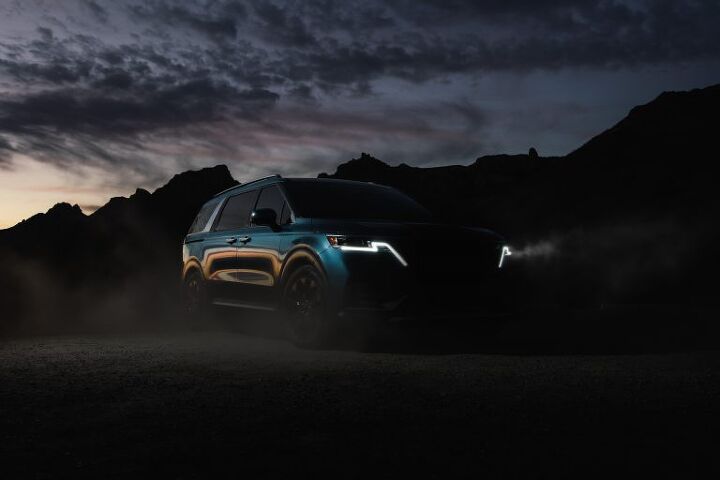
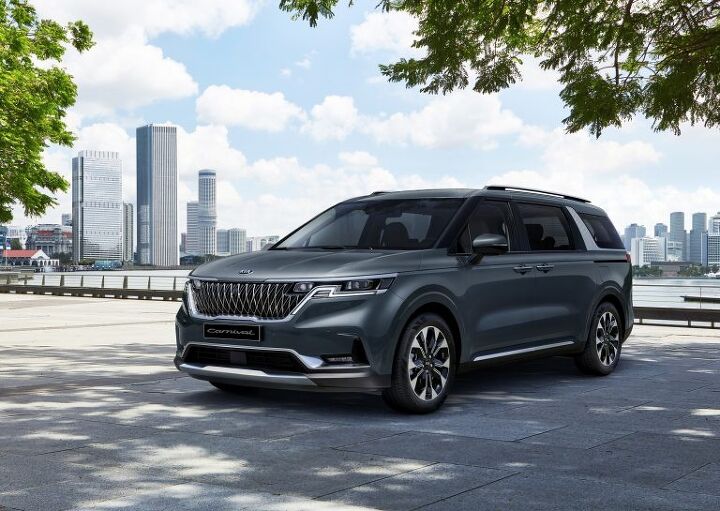
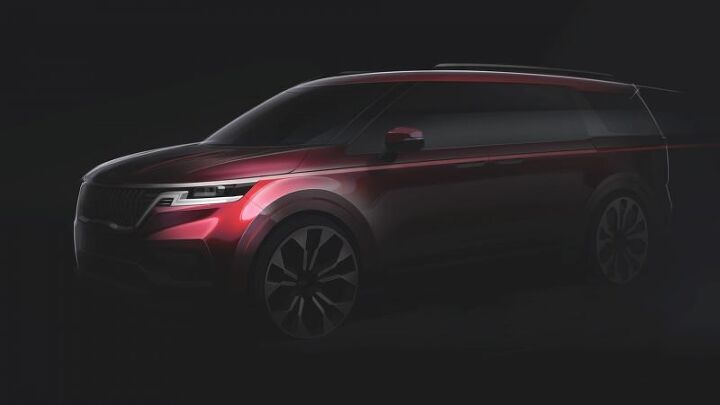
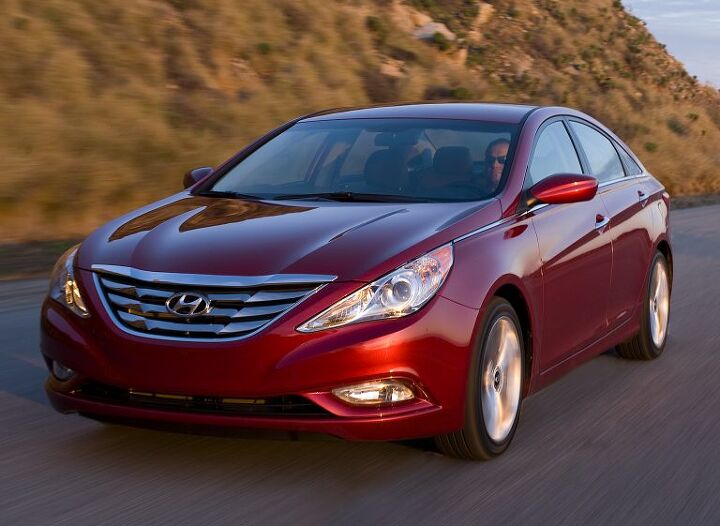

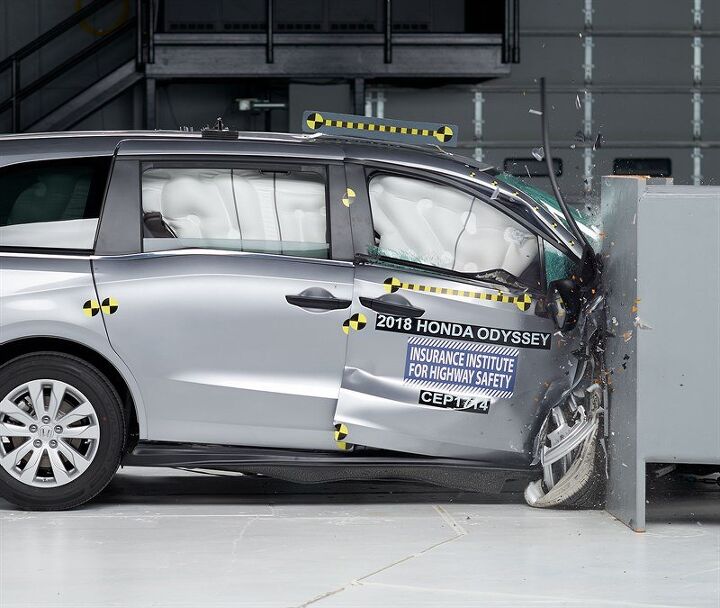
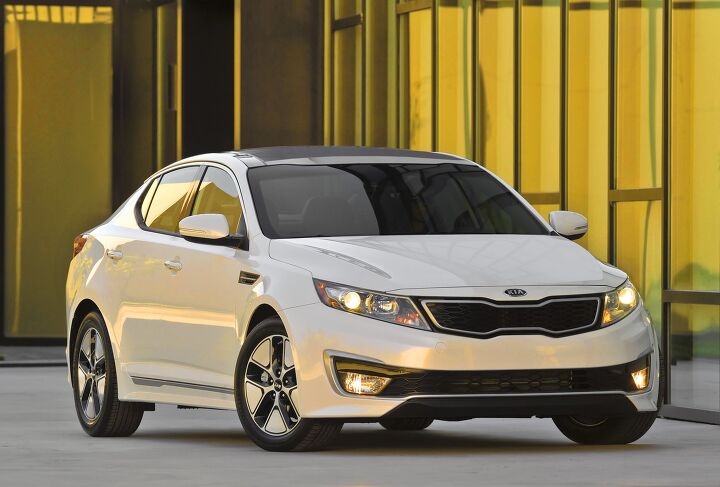
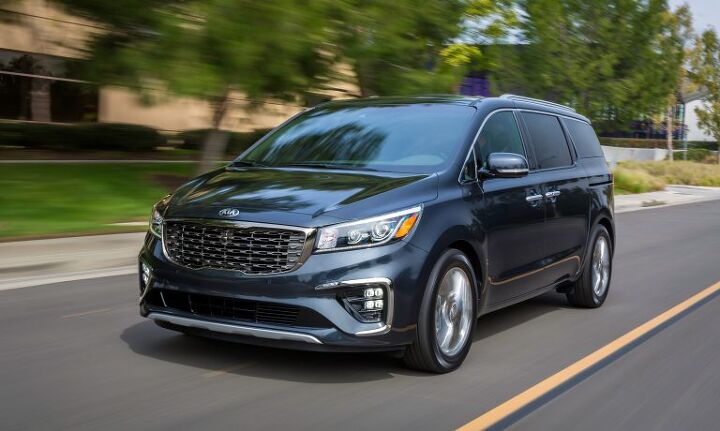


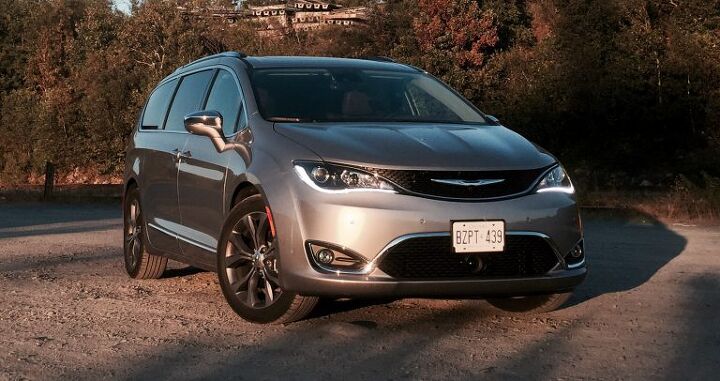
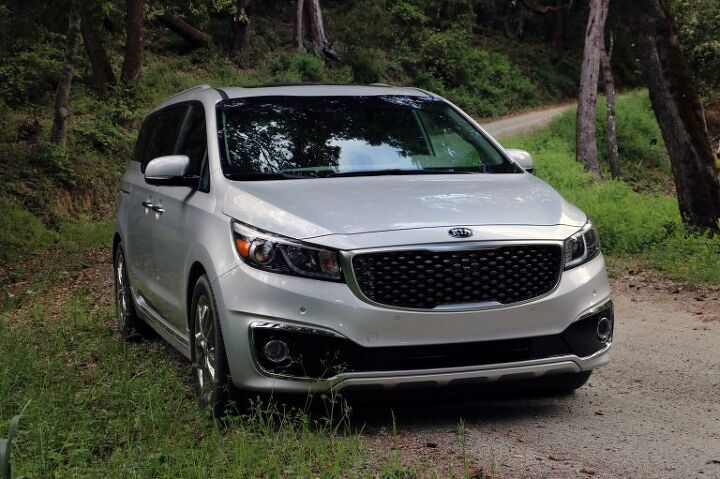
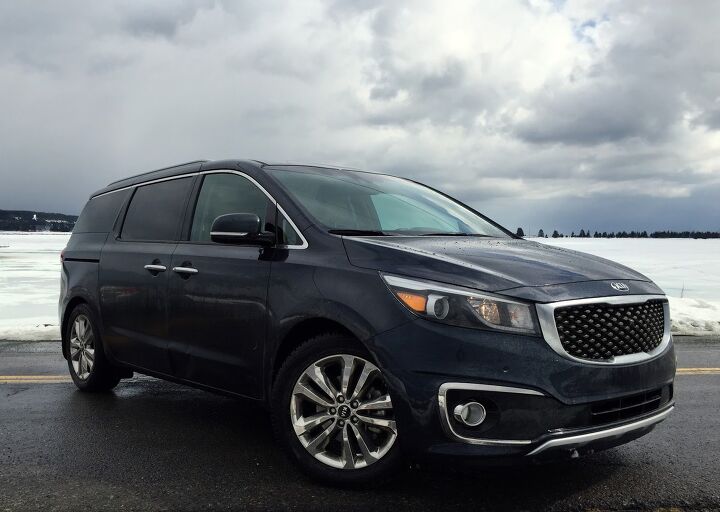














Recent Comments